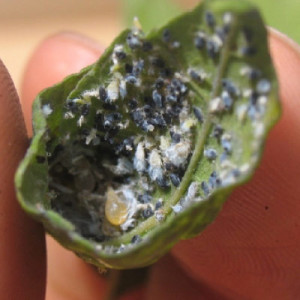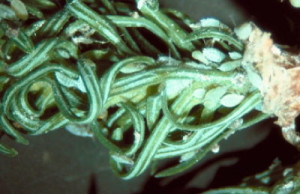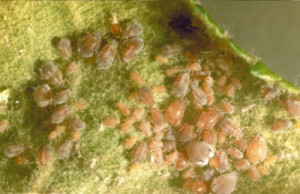Aphids are the most common insect found on trees and shrubs. There are many species of aphids that feed on numerous hosts. Aphids use their piercing sucking mouthparts to extract sap from the tender, new growth of plants. While aphid feeding does not look good, it usually doesn’t cause serious damage to plants. However, aphids do excrete a sticky substance called honeydew that can be a real nuisance, as it gets all over sidewalks, vehicles, etc.
Physical Appearance
- Aphids are slow moving, oval to pear-shaped insects ranging in size from 1/16” to 1/8” long.
- Coloring is species-specific and may be black, brown, green, red, pink, or other color.
- Pipe-like protrusions extending off the back of the insect are visible with a hand lens.
- Some aphids have transparent wings.

Treatment Strategy
Early detection is key in reducing infestations of aphids. Examine areas near the buds and on the undersides of the new leaves for aphids. When natural enemies, like the lady beetle, are not sufficient in keeping the population in check, insecticides are very effective for controlling aphids. Contact insecticides can be used on exposed aphids, but are not effective against species that develop in leaf curls. Soil applied systemic insecticides are also very effective and can be applied once in the fall or spring to deliver control throughout the growing season.
Contact Us
Do you suspect this insect may be attacking your trees or palms? Contact us and tell us about the issue and we’ll do our best to help. [email protected]


